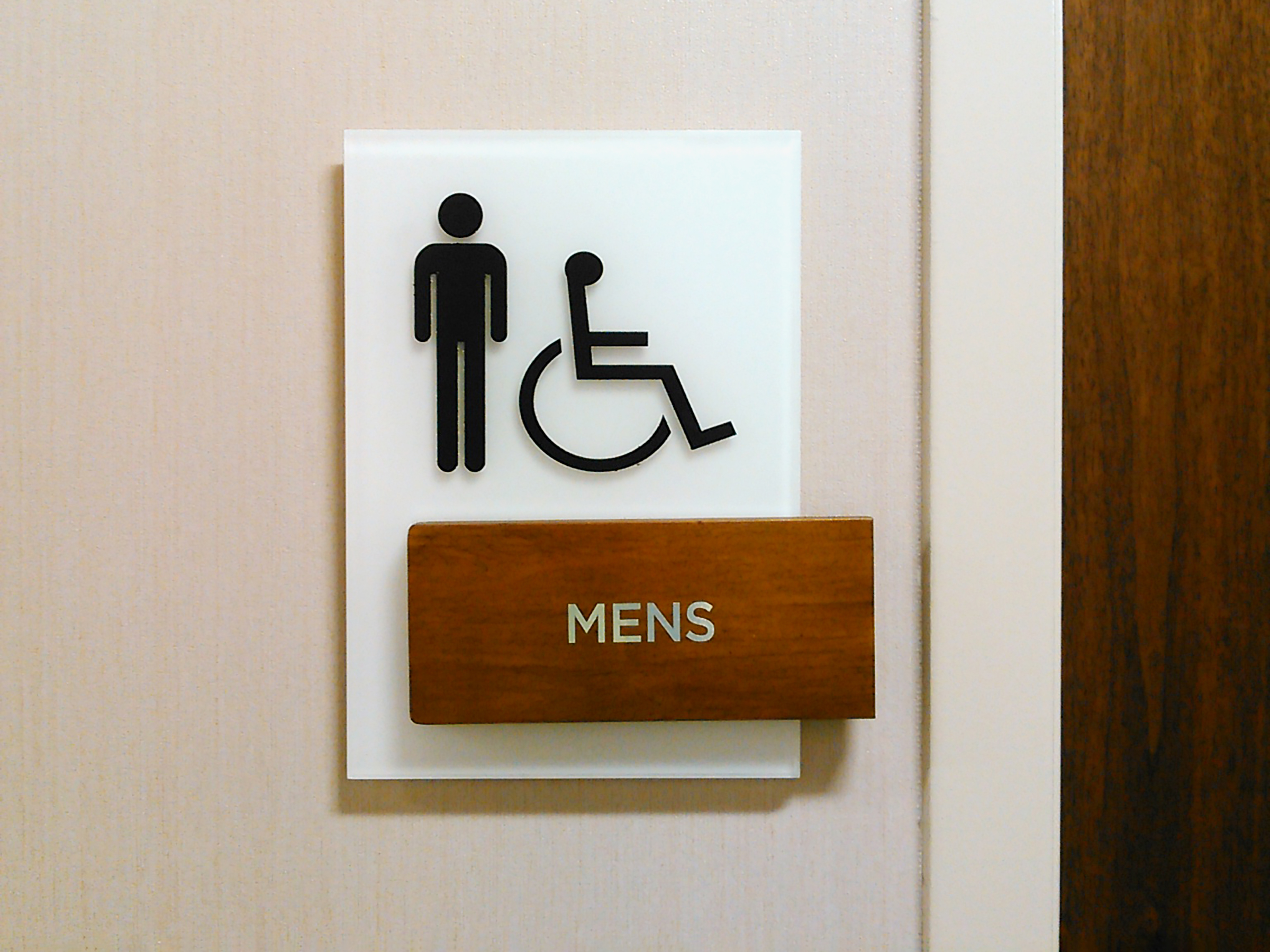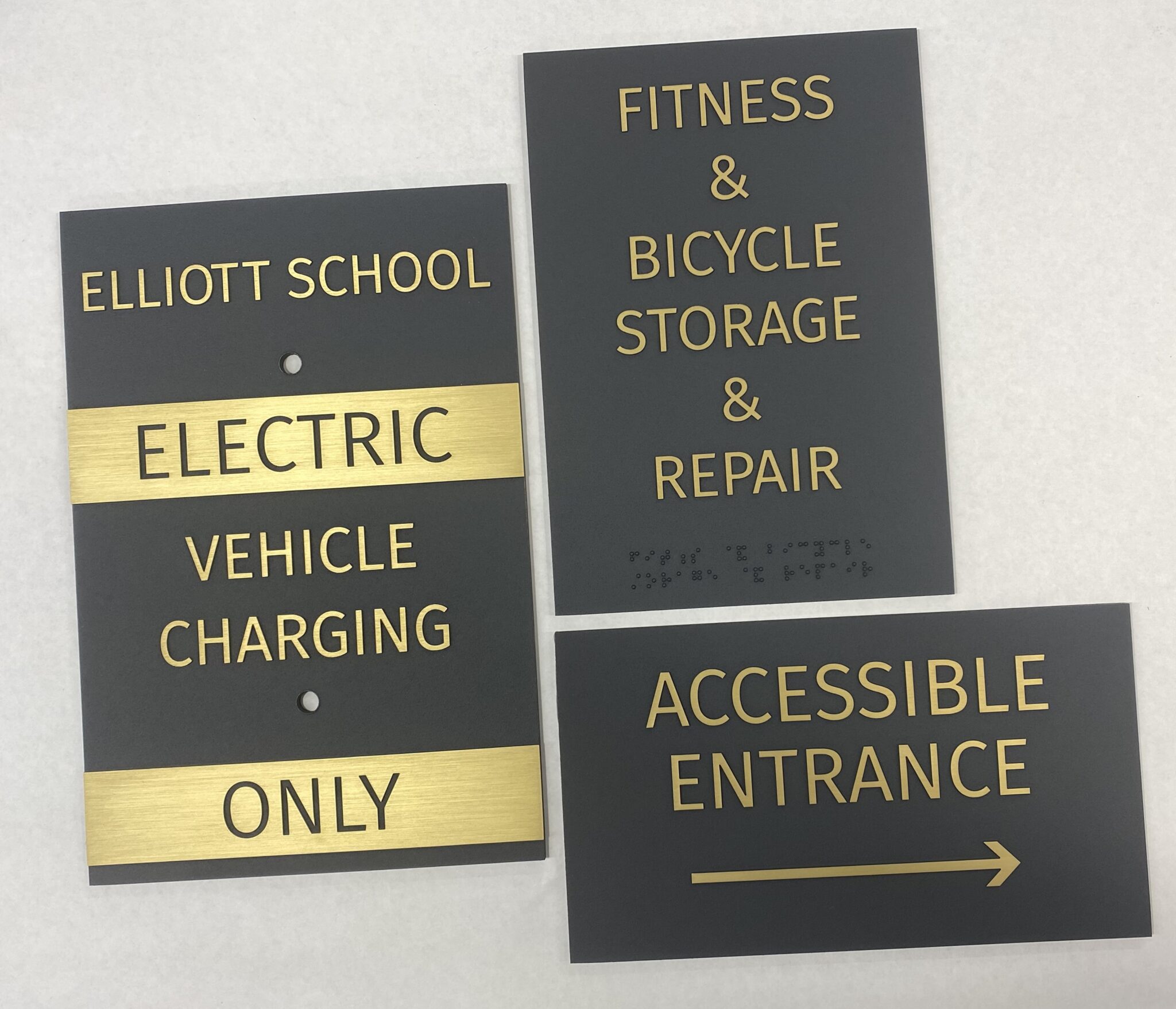Check out the Value of ADA Signs in Public Spaces
Check out the Value of ADA Signs in Public Spaces
Blog Article
Discovering the Trick Attributes of ADA Indicators for Enhanced Ease Of Access
In the realm of access, ADA indicators offer as silent yet effective allies, making sure that areas are comprehensive and accessible for individuals with disabilities. By incorporating Braille and responsive elements, these indications break barriers for the aesthetically impaired, while high-contrast color systems and readable typefaces provide to diverse visual needs.
Importance of ADA Conformity
Making certain conformity with the Americans with Disabilities Act (ADA) is crucial for promoting inclusivity and equivalent accessibility in public rooms and workplaces. The ADA, established in 1990, mandates that all public facilities, employers, and transportation solutions fit individuals with specials needs, ensuring they appreciate the exact same legal rights and opportunities as others. Compliance with ADA criteria not just fulfills lawful obligations yet also improves a company's reputation by showing its commitment to variety and inclusivity.
One of the essential elements of ADA conformity is the application of available signage. ADA indicators are created to make certain that people with specials needs can quickly navigate through spaces and buildings.
In addition, adhering to ADA laws can alleviate the risk of lawful repercussions and possible fines. Organizations that fail to adhere to ADA standards may deal with lawsuits or fines, which can be both financially troublesome and damaging to their public image. Thus, ADA conformity is important to promoting an equitable setting for everyone.
Braille and Tactile Components
The unification of Braille and responsive aspects right into ADA signs symbolizes the principles of availability and inclusivity. These features are vital for individuals who are aesthetically damaged or blind, enabling them to browse public rooms with higher independence and self-confidence. Braille, a tactile writing system, is crucial in offering created details in a style that can be quickly perceived via touch. It is usually positioned below the corresponding message on signage to ensure that individuals can access the details without aesthetic support.
Tactile elements extend past Braille and consist of elevated characters and symbols. These parts are developed to be noticeable by touch, permitting individuals to recognize room numbers, toilets, departures, and other crucial locations. The ADA establishes certain guidelines concerning the size, spacing, and placement of these tactile aspects to maximize readability and make certain uniformity throughout different settings.

High-Contrast Color Pattern
High-contrast color pattern play a pivotal duty in improving the presence and readability of ADA signs for people with visual problems. These plans are important as they optimize the difference in light reflectance between text and background, making sure that indicators are easily noticeable, also from a distance. The Americans with Disabilities Act (ADA) mandates making use of particular color contrasts to fit those with restricted vision, making it a crucial element of compliance.
The effectiveness of high-contrast shades exists in their ability to attract attention in numerous lighting problems, consisting of poorly lit atmospheres and locations with glow. Typically, dark message on a light history or light text on a dark background is employed to achieve ideal contrast. As an example, black text on a white or yellow background gives a raw aesthetic distinction that helps in quick recognition and understanding.

Legible Fonts and Text Dimension
When taking into consideration the layout of ADA signage, the choice of understandable fonts and proper message dimension can not be overstated. These components are essential for making certain that indicators are accessible to people with visual disabilities. The Americans with Disabilities Act (ADA) mandates that fonts need to be not italic and sans-serif, oblique, manuscript, extremely attractive, or of unusual type. These needs aid make sure that the text is quickly understandable from a distance and that the characters are distinct to diverse target markets.
According to ADA guidelines, the minimal message height should be 5/8 inch, and it should raise proportionally with watching distance. Uniformity in text size contributes to a cohesive aesthetic experience, aiding people in navigating atmospheres efficiently.
In addition, spacing in between letters and lines is important to legibility. Appropriate spacing avoids personalities from appearing crowded, improving readability. By sticking to these standards, designers can dramatically enhance availability, ensuring that signage offers its intended function for all people, regardless of their visual capacities.
Reliable Placement Techniques
Strategic placement of ADA read review signs is essential for taking full advantage of access and making sure compliance with lawful requirements. Effectively located indicators lead individuals with specials needs effectively, assisting in navigating in public areas. Key factors to consider consist of exposure, distance, and elevation. ADA guidelines specify that signs ought to be mounted at an elevation between 48 to 60 inches from the ground to guarantee they are within the line of sight for both standing and seated individuals. This conventional elevation variety is critical for inclusivity, enabling mobility device customers and individuals of varying heights to access details easily.
Furthermore, signs have to be positioned surrounding to the lock side of doors to permit very easy recognition prior to entry. Consistency in indication positioning throughout a center boosts predictability, reducing confusion link and boosting general customer experience.

Conclusion
ADA signs play a crucial duty in advertising access by incorporating functions that resolve the demands of individuals with handicaps. Including Braille and tactile components ensures vital info comes to the aesthetically damaged, while high-contrast color design and clear sans-serif typefaces improve visibility throughout numerous lighting problems. Reliable positioning approaches, such as proper mounting elevations and calculated locations, even more assist in navigating. These aspects collectively promote a comprehensive setting, emphasizing the relevance of ADA compliance in making certain equivalent access for all.
In the world of accessibility, ADA indications serve as silent yet effective allies, making sure that spaces are navigable and inclusive for people with disabilities. The ADA, passed in 1990, mandates that all public centers, employers, and transport solutions suit people with disabilities, guaranteeing they take pleasure in the exact same legal rights and chances as others. ADA Signs. ADA indications are created to ensure that people with disabilities can conveniently browse through structures and rooms. ADA guidelines specify that indications should be installed at an elevation between 48 to 60 inches from the ground to ensure they are within the line of view for both standing and seated individuals.ADA signs play an essential duty in promoting accessibility by integrating features that resolve the needs of people with impairments
Report this page